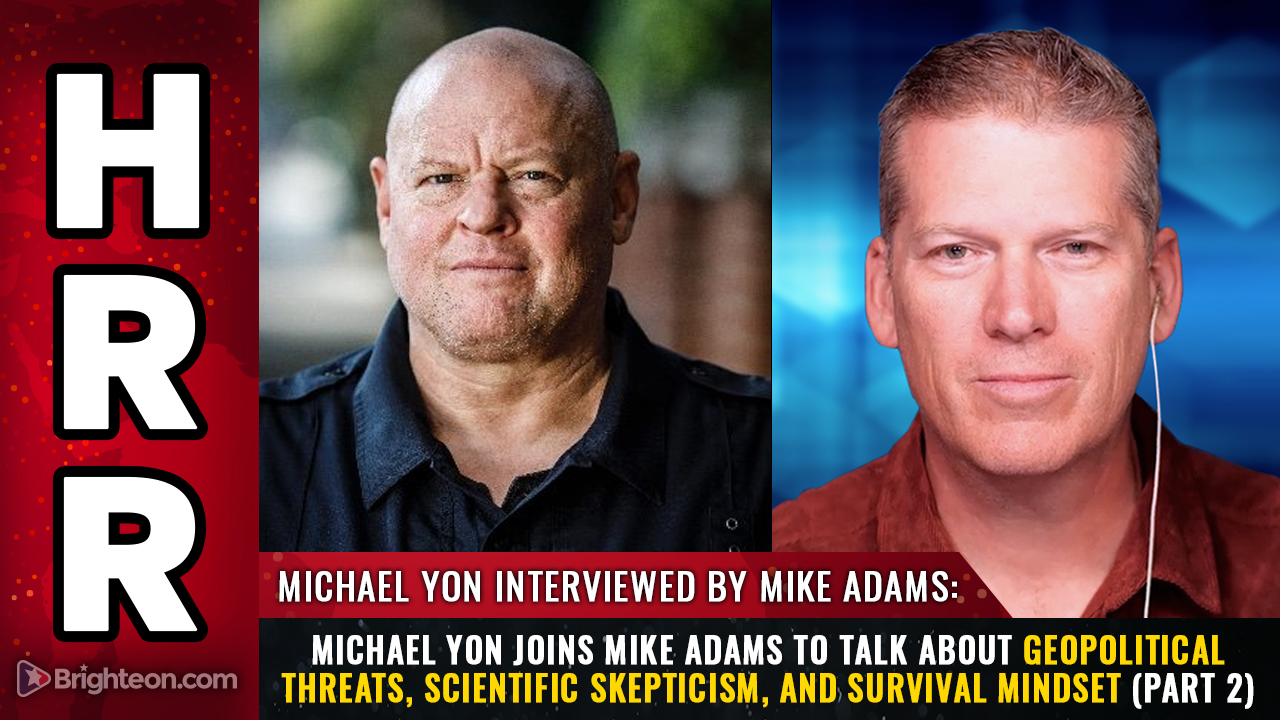 Parler
Parler Gab
Gab
- The Independent Media Alliance (IMA), led by Whitney Webb, Derrick Broze and Ryan Cristián, is launching a decentralized news portal on Odysee’s Decentralized Media Ecosystem (DME). This platform will allow journalists to retain full editorial and monetization control, free from corporate censorship.
- The IMA’s move responds to repeated censorship by mainstream platforms (e.g., YouTube, Patreon), which have demonetized, shadowbanned, or removed independent journalists for challenging corporate or establishment narratives.
- Odysee’s Portal functions as a decentralized website builder, enabling peer-to-peer content hosting, anti-censorship resilience and creator-owned monetization — contrasting Big Tech’s centralized control and opaque algorithms.
- Built on blockchain-like protocols, Odysee’s DME makes it nearly impossible to censor or shut down content unilaterally, ensuring persistent access to independent journalism.
- The IMA-Odysee collaboration signals a shift toward trust-based, community-driven media, prioritizing transparency over profit — a model that could redefine press freedom in the face of increasing corporate gatekeeping.
A fight for sovereignty in an era of censorship
The IMA’s portal launch is rooted in years of trial by fire. Webb (Unlimited Hangout), Broze (The Conscious Resistance Network) and Cristián (The Last American Vagabond) have faced repeated suppression from Big Tech. Their reporting—often critical of corporate power or Establishment narratives — has been shadowbanned, demonetized, or buried by opaque algorithms. In 2022, for instance, Webb lost access to YouTube and Patreon, jeopardizing her income and audience reach. These experiences galvanized the alliance’s mission: build infrastructure unshackled from centralized oversight. Centralized platforms, critics argue, prioritize profit over truth. As Mike Adams, CEO of Free Speech Systems, noted in a 2023 interview: “The future belongs to independent platforms that prioritize transparency and community trust over shareholder demands.” The IMA’s embrace of Odysee reflects this ethos. Unlike Facebook or Twitter, Odysee’s DME does not filter content or dictate monetization models. Instead, creators maintain full ownership, managing commenting systems, ad revenue and moderation.Odysee’s Portal: A new paradigm for journalism
Odysee’s Portal framework, described by Chandra as a “decentralized website builder,” allows users to construct self-sustaining media hubs without reliance on centralized entities. Each portal operates on a peer-to-peer network, ensuring resilience against censorship or technical disruptions. For the IMA, this infrastructure means they can publish investigative reports, host community discussions and accept patronage — all while protecting user privacy. The platform’s decentralized nature also offers protection against deplatforming. Unlike traditional sites that can be removed by a single entity, Odysee’s DME runs on blockchain-like protocols, making it nearly impossible to shut down without dismantling the entire network. As Broze stated, the move ensures that “the truth can no longer be silenced by the flick of a switch in Silicon Valley.” Historically, decentralized media models have struggled with scalability and user adoption. Yet Odysee’s strategy — positioning itself as both a host and a toolkit — may prove disruptive. The platform, founded in 2020, has already cultivated a user base resistant to mainstream censorship. “This isn’t just about avoiding bans — it’s about creating a media ecosystem that thrives on trust and transparency,” Chandra said.Implications for the future of journalism
The IMA’s partnership with Odysee signals a potential turning point for independent journalism. For decades, legacy media outlets and Big Tech have set the agenda, often sidelining voices that challenge power structures. Decentralized platforms, however, empower creators to pursue truth without compromising principles. Critics argue that such models may lack the reach or resources of conglomerate-backed platforms, but advocates counter that quality and trust—rather than algorithmic amplification — will drive the future of media. Webb, who joined the alliance in 2021 after losing YouTube access, summed up this vision: “Our audience chose us, and now we can finally choose how to serve them.”A new framework for free expression
The Independent Media Alliance’s launch on Odysee’s Portal represents more than a technical shift—it is a cultural and philosophical statement. By harnessing decentralized technology, the alliance has redefined the boundaries of press freedom, proving that independent journalism can thrive beyond the reach of corporate gatekeepers. As tech monopolies tighten their control, such platforms offer a lifeline for voices long pushed to the margins. For readers weary of censored discourse or algorithm-driven content, the IMA’s model may foreshadow a future where journalism is shaped not by profit margins, but by truth, resilience and the communities it serves. In Chandra’s words: “This is the infrastructure of the future — a world where creators and audiences finally collaborate on their own terms.” Sources for this article include: ReclaimTheNet.org Odysee.comU.K. government to launch digital ID wallet this summer
By Laura Harris // Share
DEI update: Black women plagiarize at ‘astronomically higher rates’ than other groups…
By News Editors // Share
Biden administration targeted mask and vaccine opponents as “terrorists,” new docs reveal
By Willow Tohi // Share
Global catastrophe looms: Zionist-driven war on Iran could trigger WWIII
By Finn Heartley // Share
A closer look at the corporate influences steering the CDC and manipulating US health policy
By Lance D Johnson // Share
Governments continue to obscure COVID-19 vaccine data amid rising concerns over excess deaths
By patricklewis // Share
Tech giant Microsoft backs EXTINCTION with its support of carbon capture programs
By ramontomeydw // Share
Germany to resume arms exports to Israel despite repeated ceasefire violations
By isabelle // Share









